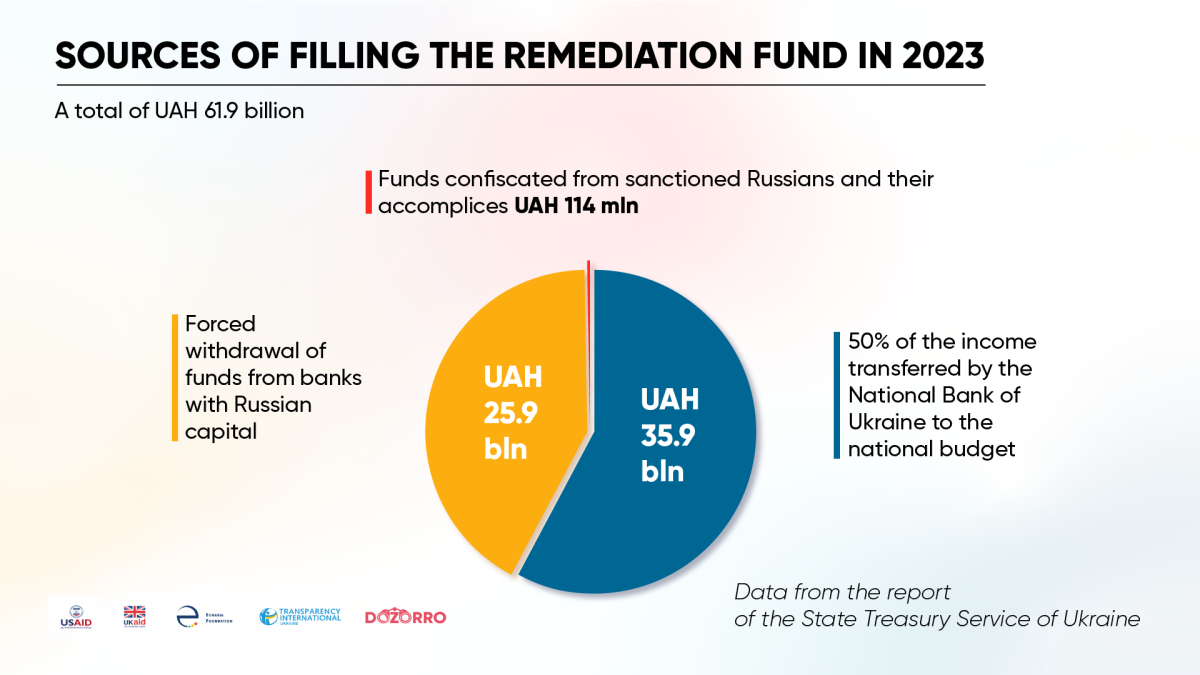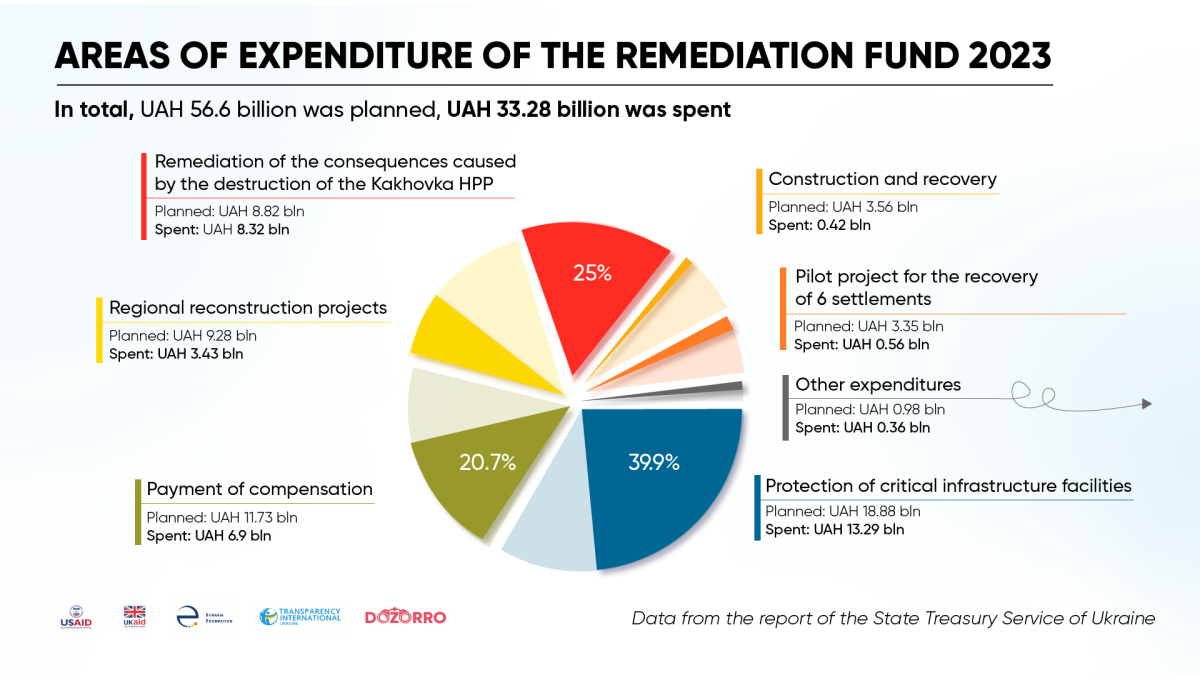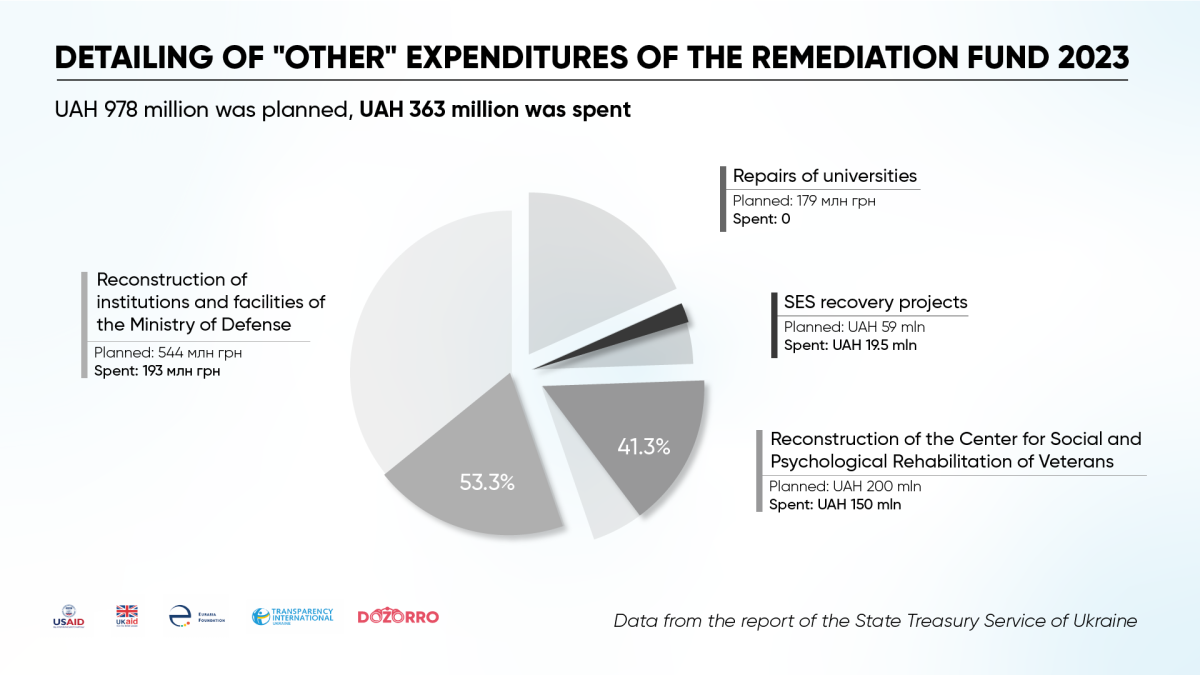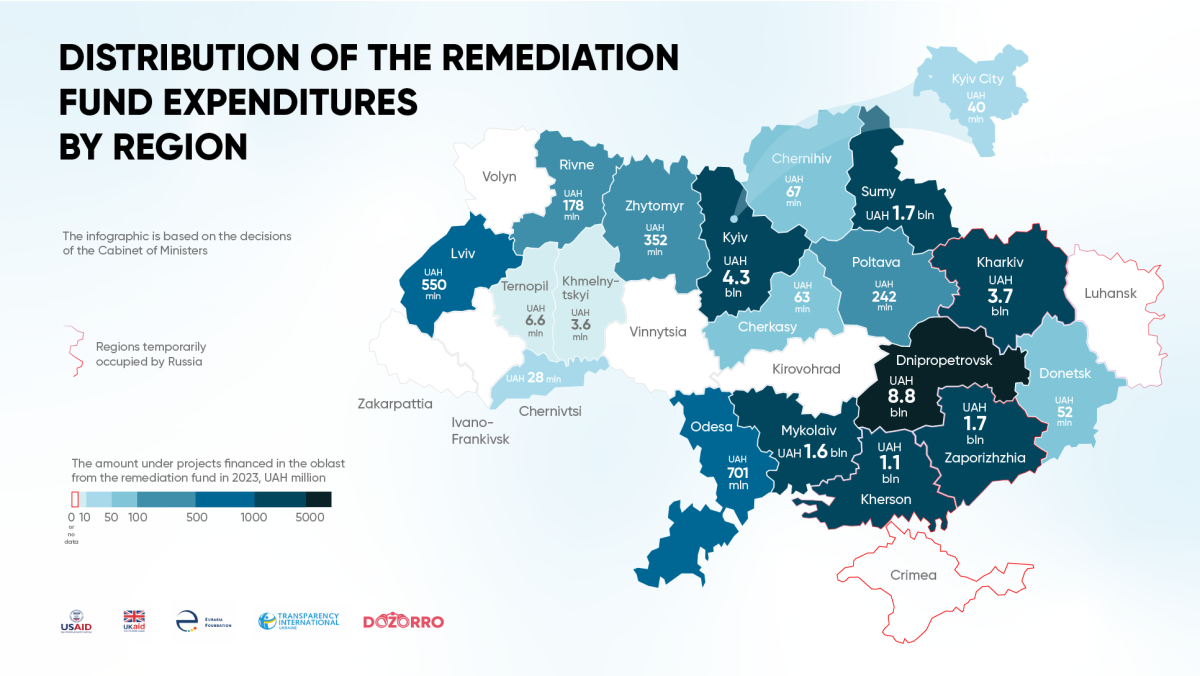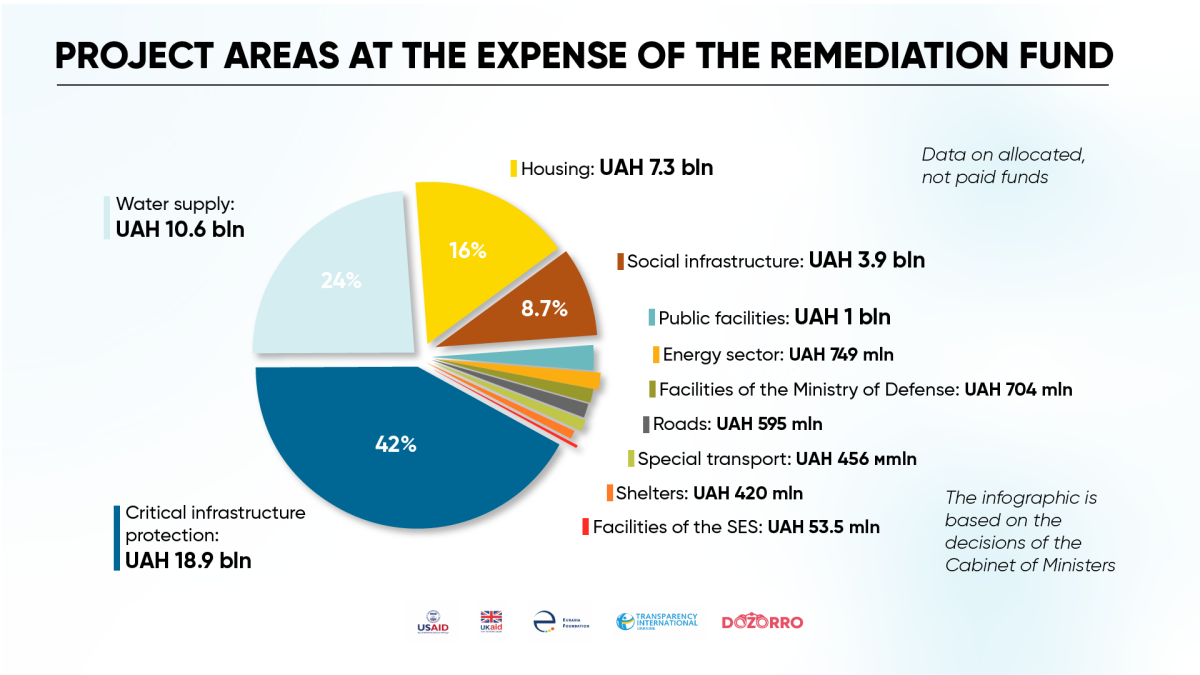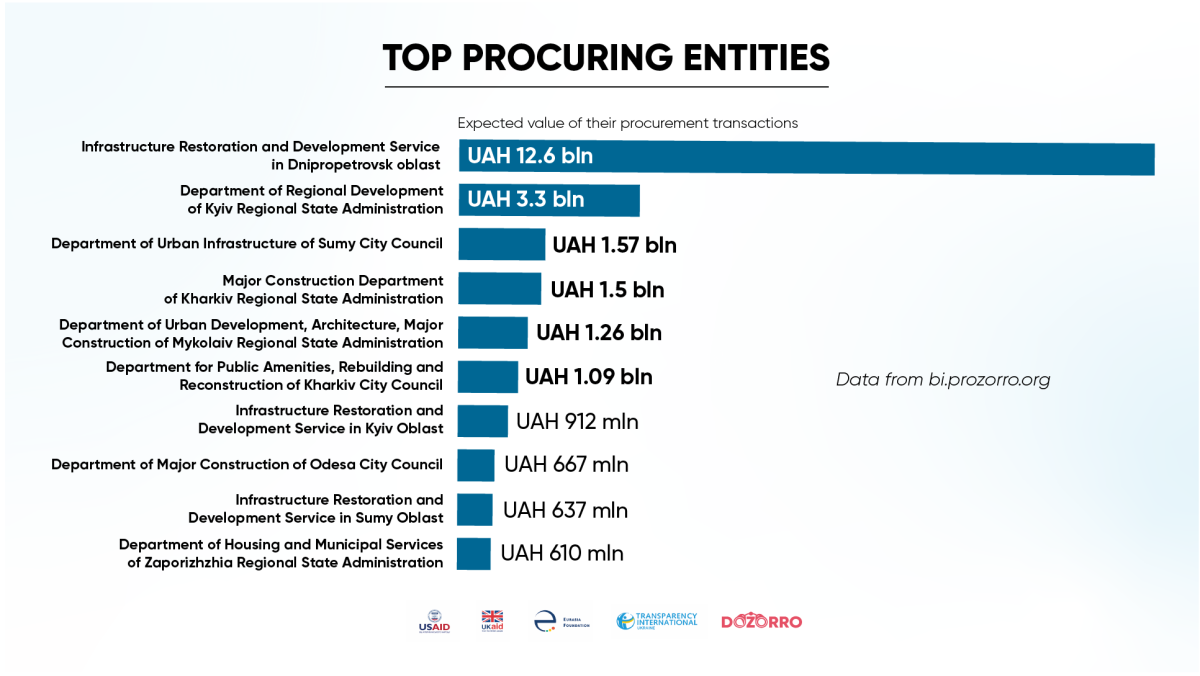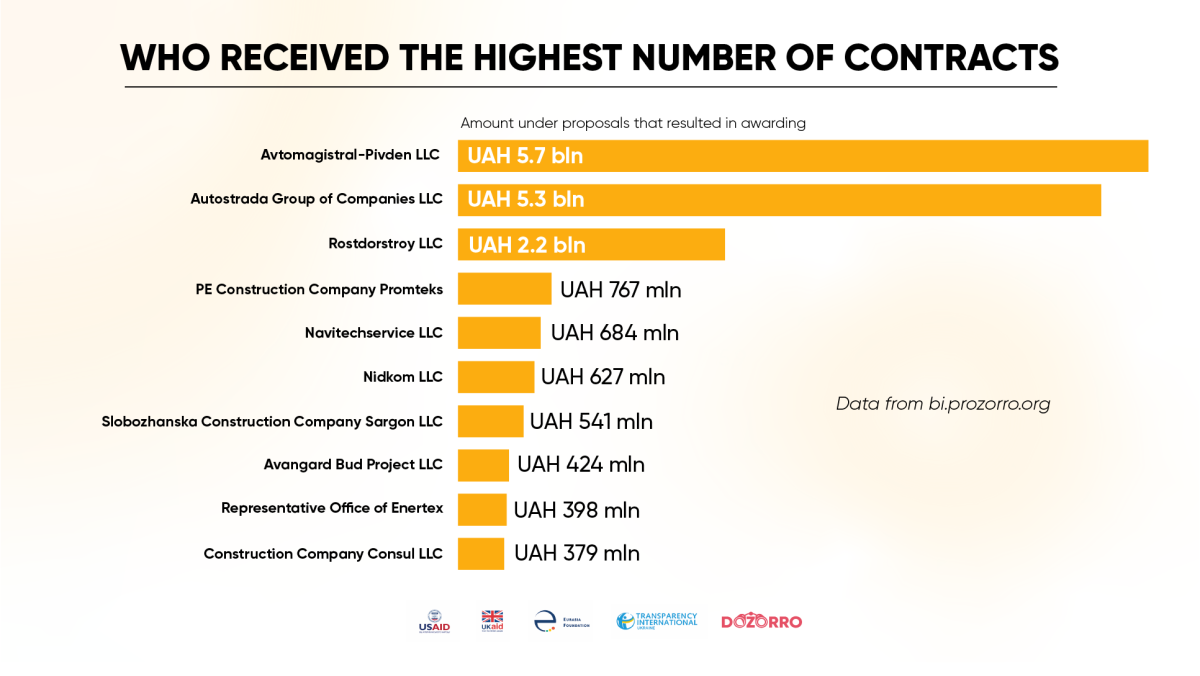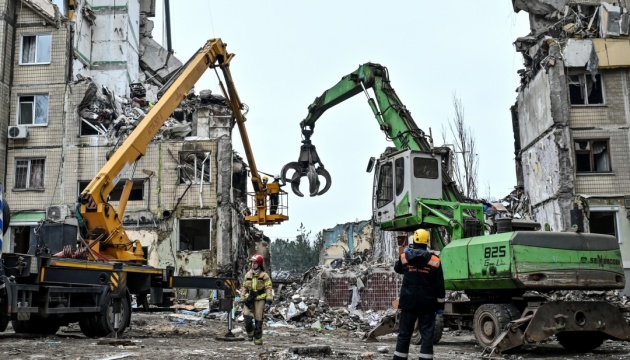

In autumn 2022, the Verkhovna Rada created the Remediation Fund—the main source of recovery at the national level. This is a budget program aimed at rebuilding, strengthening the protection of critical infrastructure, and compensating people whose housing has been damaged or destroyed by the Russians. However, in the year of its inception, the fund was not launched; this happened only in 2023. Last year, UAH 61.9 billion was allocated for it.
We studied how the fund operated in 2023: what were its sources, what the money was spent on and how. In particular, we were interested in how transparent and objective the distribution of funds was and which areas were funded the most.
General information about the fund
Since the fund is a budget program, its volume and sources of funding are determined annually in the national budget. This affects the stability of the fund because in the conditions of such uncertainty of financing, it is difficult to plan the long-term reconstruction.
In 2023, the fund was financed by:
- assets forcibly seized or confiscated by Ukraine;
- 50% of the profit, which the National Bank of Ukraine transfers to the national budget.
UAH 35.9 billion allocated to the fund is part of the NBU’s record income in 2022. Another UAH 25.9 billion was raised through the forced withdrawal of funds from banks with Russian capital. An additional UAH 114 million was confiscated from the sanctioned Russians and their accomplices. However, the sale of other Russian assets did not generate any income. In August 2023, due to the lack of a minimum number of potential buyers and the problematic nature of the asset, the first auction for the sale of the confiscated agricultural company Investagro that had belonged the Russian oligarch Shelkov was not held. Subsequently, the parliament blocked the privatization of sanctioned assets altogether.
On March 8, 2024, amendments to the Law on Sanctions came into force, removing restrictions on the sale of assets. As of the end of that month, the State Property Fund of Ukraine managed 693 sanctioned assets, and their privatization will obviously take several years.
According to the report of the State Treasury Service of Ukraine, provided at the request of TI Ukraine, UAH 56.6 billion out of the accumulated UAH 61.9 billion was further distributed to the following areas:
- UAH 18.8 billion: protection of critical infrastructure facilities;
- UAH 11.7 billion: compensation for damaged and destroyed housing;
- UAH 9.2 billion: regional reconstruction projects;
- UAH 8.8 billion: remediation of the consequences caused by the destruction of the Kakhovka HPP, in particular the construction of main water pipelines;
- UAH 3.5 billion: construction and restoration of residential and public infrastructure;
- UAH 3.3 billion: a pilot project for the comprehensive restoration of affected settlements;
- UAH 978 million: for other needs, including UAH 179 million for major repairs of damaged higher education institutions; UAH 53 million for the restoration projects of the State Emergency Service; UAH 200 million for the reconstruction of the center for social and psychological rehabilitation of the population under the project of the Ministry of Veterans Affairs; and UAH 544 million for the reconstruction of institutions and facilities of the Ministry of Defense.
Effectively, UAH 33.3 billion was paid out, which is 53.8% of the last year’s fund capacity.
Compensation to owners of destroyed and damaged housing
UAH 11.7 billion, that is, 19% of the fund’s resources, was allocated to the eRecovery program last year as compensation to people whose housing had been damaged or destroyed by the Russians.
To receive compensation, citizens must submit an application to an administrative service center, a notary, or in the Diia application. Further, the commission of the local community council examines the housing and determines the amount of compensation. It can be provided in the form of funds that can be spent on the repair or construction of a house or a certificate for the purchase of new housing.
Payments under the program were first conducted in May 2023; then the Cabinet of Ministers allocated UAH 4.4 billion for the first wave of compensation for damaged housing. In total, in 2023, approximately 35,000 families received such compensation totaling UAH 3.2 billion.
In August, the second component was launched—compensation for destroyed housing. 8,400 families applied for it. 2,000 families obtained housing certificates, with a total value of UAH 3.7 billion.
Thus, the average amount of compensation to the owner of the damaged housing is about UAH 90,000. On average, the state provides citizens with UAH 1.9 million for destroyed housing.
In fact, the amount allocated for compensation was spent by 59%.
Damaged and destroyed property compensation programs remain the most non-public areas of recovery. Most of the information about the amount of compensation and the list of persons who receive it is in the Register of Destroyed and Damaged Property, which is not publicly available.
In fact, the functions of distributing funding are entrusted to commissions under local councils, whose activities are difficult to assess. Although the compensation process involves examining a site and completing a damage assessment checklist, such documents are not public. Therefore, it is almost impossible to verify the reliability and validity of the amount of compensation.
The public is engaged only when it is included in the commissions that make decisions on the approval of compensation.
Solving this problem would entail opening access to the Register of Destroyed and Damaged Property, in which relevant data are entered, at least anonymously, and to documents confirming the amount of compensation. Without open access to this information, it is impossible to assess the integrity of funding allocation for such compensation.
Reconstruction projects
The lion’s share of the fund last year was allocated to reconstruction projects—more than 70%. They are very diverse: from the reconstruction of one house to the comprehensive restoration of settlements. It was the government that determined where to spend the money, and depending on the type of project, the selection approach differed. However, in general, the stages of project development and their implementation risks coincide.
Project design
The first step is project development. Possible reconstruction options should be considered to assess which of them will be more expedient and rational. This is done by project initiators, i.e., reconstruction and development services, executive bodies of local councils, and military administrations. They decide whether to repair a destroyed school or build a new one; build it in the same place or move it several blocks away. Unfortunately, there are no government requirements or policies for this stage. Therefore, such an assessment at the design stage of the project is not always carried out, and the initiators or implementers of the project may be interested in obtaining more funding, despite the inexpediency of such costs.
The public is practically not engaged in the development of projects. Moreover, information about the project was often published already when the funding was being approved or after that.
This, in particular, led to cases where project initiators chose more expensive technical solutions that did not always meet real needs.
Examples
Zaporizhzhia decided to reconstruct an old panel house, damaged by Russian shelling, instead of rebuilding it.
But it turned out to be more expensive: the cost of works exceeded the potential costs in the new real estate market. The owners of the destroyed housing were dissatisfied with this reconstruction method. Instead of either a new modern home or a possibility to buy new housing elsewhere for the same or smaller amount, they are forced to wait for the completion of the reconstruction of the old house, whose service life will still be shorter than that of a new one.
Buzova and Vasylkiv, settlements in Kyiv oblast, decided to rebuild high-rise buildings destroyed by the Russians from scratch. According to the DOZORRO project of Transparency International Ukraine, in both cases, the cost per square meter is higher than in the real estate market or in other construction projects on Prozorro that are not related to recovery. Therefore, this is not the most profitable way for procuring entities to provide compensation to people for housing.
Moreover, the lack of public engagement in the selection of project ideas sometimes led to the fact that local authorities initiated rather controversial projects that were not related to reconstruction needs.
An example
Kharkiv planned to build a “multifunctional center” in Sarzhyn Yar at the expense of the Fund. The cost of construction was estimated at UAH 180 million. However, the facility had nothing to do with the consequences of military aggression, and its construction had been planned back in 2020. The likely purpose of the multifunctional center was to provide office and retail space.
As a result of considerable public resistance, the project was removed from the Fund’s financing plans. Obviously, if the opinion of the residents had been considered in advance, there would have been no need to develop a project.
Therefore, in the future, the state should pay more attention to the development of typical approaches to making decisions about the design of a recovery project:
- in which cases reconstruction is inexpedient;
- what needs the project should ensure to be important for the fund’s program;
- how to engage the public in finding an optimal design of the project.
Determining the project cost
Further, the initiator of the project or the one who is responsible for its implementation orders the production of design and estimate documentation from contractors—project organizations. Currently, this is a problematic stage because quite often these documents inflate the cost of works and materials. This, together with the limited market and weak competition in it, leads to a high risk of overestimation of project implementation costs.
Currently, there is no effective tool for monitoring and controlling the design and estimate documentation, and the responsibility of the project organization is not provided for drafting projects containing inflated costs.
As a result, project documentation may be compiled according to prices that are higher than market prices.
An example
During the reconstruction of a damaged high-rise building in Kharkiv, the project organization budgeted the cost of materials that significantly exceeded market prices—sometimes twice as much. The amount under the project was UAH 129 million. The only participant whose bid was close to the expected value took part in the procurement transaction. Thus, the potentially inflated cost of materials became a prerequisite for concluding a contract at a higher cost than if the prices corresponded to the market ones.
To minimize this risk, it is necessary to introduce effective tools for assessing project and estimate documentation, including through an independent audit.
Prioritization and selection
At the end of 2023, Ukraine’s needs for recovery amounted to USD 486 billion. Compared to them, the capacity of the fund last year was only 0.3%. Therefore, it is crucial to clearly prioritize the needs and regions.
In general, the list of projects for financing was approved by the government based on the recommendations of an interagency working group of representatives of sectoral ministries. However, this did not apply to:
- Remediation of the consequences caused by the destruction of the Kakhovka HPP: construction of the main water pipeline, restoration of housing and compensation for it. The construction was approved by the Cabinet of Ministers without a working group, whereas compensation for housing was the prerogative of the executive bodies of local self-government and military (military-civil) administrations of settlements.
- Protection of critical infrastructure facilities of the fuel and energy sector. The list of such projects is approved by a joint order of the Ministry of Energy and the Ministry of Infrastructure.
- A pilot project on comprehensive recovery of affected settlements. Approved by the government.
However, for those projects that are within the general rules, the selection procedure is rather vague: the procedure for using the resources of the Remediation Fund, which the government approved by Resolution No.118, does not sufficiently clarify this process. It is entrusted to specialized ministries and an interagency group. This already implies a contradiction of interests because each of the agencies represented in the group has in mind the interests of its own sector and not reconstruction in general. Therefore, recovery priorities can be focused more at the sectoral level than at the strategic one.
In order for the distribution of funding to meet national and regional needs, rules for prioritizing projects must be developed.
At the time of the first meeting of the interagency working group on May 12, 2023, there were none. Back then, the group considered the first 407 recovery projects, totaling UAH 17 billion.
TI Ukraine together, with the RISE Ukraine Coalition, provided the working group with the results of project assessment conducted according to our own prioritization methodology. It includes the evaluation of the project depending on factors such as:
- the level of needs ensured by the project and whether these needs are directly related to the remediation of the consequences of armed aggression;
- a cost per user indicator that allows assessing how effectively resources are allocated among different needs;
- the level of project preparation by the initiator;
- an additional impact of the project (such as energy efficiency and inclusiveness).
However, the submitted assessment results did not have a direct impact on the selection. For example, part of the projects approved for funding according to the public methodology had a minimum priority rating. In particular, this applies to projects that are not related to the consequences of armed aggression.
An example
UAH 700 mln was allocated for the reconstruction of Herbachevskyi Zhytomyr Regional Clinical Hospital and Zhytomyr Regional Children’s Hospital. The project of their reconstruction was developed before the full-scale invasion, and there is no information about the damage or destruction of these hospitals as a result of armed aggression. The amount of funding for these two hospitals exceeded the total expenses of the fund for the restoration of the entire Chernihiv region.
More than UAH 400 million was allocated for the construction of a kindergarten and a water pipeline in Odesa. These projects had also been developed before the full-scale invasion.
The allocation of resources for projects that are not directly related to the consequences of the destruction could have an adverse effect on ensuring priority needs of the population and lead to inefficient allocation of resources.
Last year, projects in the following areas were fully or partially funded without transparent prioritization:
- Implementation of regional reconstruction projects.
- Construction and restoration of infrastructure, residential and public facilities, buildings and structures in which subsequently services will be provided to residents and legal entities.
- Major repairs of higher education institutions.
- Construction, repairs, development of design and estimate documentation for SES facilities.
- Construction and restoration of facilities of the Ministry of Defense.
On July 14, 2023, the second meeting of the interagency working group was held. The Ministry for Restoration submitted a list of projects for approval, considering the prioritization according to the RISE Ukraine methodology.
This has significantly increased the objectivity of project selection. Funding was allocated for destroyed and damaged facilities that were crucial for the restoration of communities—housing, critical infrastructure, shelters.
A month later, on August 16, the interagency working group held its third meeting and adjusted the funding of approved projects and made changes to their list.
Finally, on October 20, the Ministry for Restoration approved the prioritization methodology, which had been developed jointly with representatives of the World Bank. However, it is still advisory in nature, which carries the risks of interference and political influence on the distribution of funding. There are several levels of potential influence on the selection of projects:
- possibility for communities to submit projects only through regional state administrations (this risk was removed in February 2024);
- assessment and formation of a generalized list of projects by specialized ministries in areas without clear measuring indicators;
- approval of the final list by the interagency commission without considering project prioritization.
In late 2023, the National Anti-Corruption Bureau exposed an MP of Ukraine in an attempt to bribe a member of the working group to allocate funding for the project of his choosing. This was the climax in the matter of the subjectivity in the selection of recovery projects and the possible influence on the adoption of such decisions.
According to the report of the State Treasury Service of Ukraine and decisions of the Cabinet of Ministers, UAH 44.9 billion was allocated for at least 701 reconstruction projects last year.
Without considering the protection of critical infrastructure since information about it is non-public, the largest scope of financing falls on Dnipropetrovsk oblast (UAH 8.8 bln), Kyiv oblast (UAH 4.3 billion without Kyiv), and Kharkiv oblast (UAH 3.7 billion). Zaporizhzhia and Sumy oblasts come next: about UAH 1.7 billion each. In general, these regions cover 80% of the allocated funds.
We also divided the projects into focus areas. In addition to the protection of critical infrastructure, which accounts for UAH 18.8 billion, the largest amount of funding fell on water supply (UAH 10.6 billion) and housing (UAH 7.3 billion). Together, this is approximately 65% of the funds allocated last year.
Such a distribution is generally consistent with the goals and objectives of reconstruction. They primarily entail the restoration and protection of critical infrastructure and the possibility to provide the population with housing that was located in the combat zone.
Procurement for reconstruction
We managed to identify 293 procurement transactions worth UAH 29.2 billion on Prozorro, which were announced in 2023 based on selected reconstruction projects. When searching, we used keywords from the project titles, so orders with other titles might not have been included in the sample.
277 of them were conducted according to a competitive procedure: open bidding with features was announced. However, only one participant came to 55% of such lots, so there was no real competition. Two bids were submitted to 34% of tenders.
The remaining 16 procurement transactions were conducted directly. In particular, 2 of them are designated as defense-related: this is the reconstruction of the Main Military Clinical Hospital in Kyiv for UAH 14.1 million.
Almost all procurement transactions were completed, only 6 lots were unsuccessful.
The largest procurement transactions were initiated by the following procuring entities:
- Infrastructure Restoration and Development Service in Dnipropetrovsk oblast: UAH 12.6 billion;
- Department of Regional Development of Kyiv Regional State Administration: UAH 3.3 billion;
- Department of Urban Infrastructure of Sumy City Council: UAH 1.6 billion;
- Major Construction Department of Kharkiv Regional State Administration: UAH 1.5 billion;
- Department of Urban Development, Architecture, Major Construction and Support of Development Projects of Mykolaiv Regional State Administration: UAH 1.3 billion.
On the part of the business, the largest amounts under contracts as of May 14, 2024, fall on:
- Avtomagistral-Pivden LLC: UAH 5.6 billion;
- Autostrada Group of Companies LLC: UAH 5 billion;
- Rostdorstroy LLC: UAH 2.1 billion.
As of mid-May, there were 39 implemented contracts, and 15 were terminated. The rest of the contracts are still being implemented.
As of May 14, 2024, the State Audit Service had launched monitoring in 115 cases under these procurement transactions. In 82 cases, it found violations. Most often, auditors recorded violations in the tender documentation (54 monitoring cases) and in the procedure for reviewing the tender proposal (39 monitoring cases).
According to the report of the State Treasury Service of Ukraine, UAH 26 billion was effectively allocated to spending units.
Control and evaluation of project implementation
The legislation of Ukraine provides for independent author’s and technical supervision when performing construction works. But despite this, the construction process contains quite high risks of poor-quality or incomplete performance of works.
Assigning the functions of monitoring and control over the implementation of projects exclusively to spending units leads to high risks of abuse.
An example
During a visual inspection of the reconstruction of a high-rise building on 101 Vokzalna Street in Bucha, representatives of TI Ukraine found out about numerous comments from apartment owners regarding the poor quality of the works. For example, the installed windows did not correspond to the size of the window openings, and the holes in the walls were filled with polyurethane foam.
Ensuring an independent technical audit of projects could help to solve the issues of work performance quality. If the technical supervision is more about controlling the compliance of the works performed with the design and estimate documentation, then the technical audit checks the quality of construction. Its results may even prompt changes to projects. Therefore, it will help increase their effectiveness.
In addition, the Resolution of the Cabinet of Ministers of Ukraine No.118 obliges spending units and recipients of the fund’s resources to report on how they implement reconstruction projects. However, there is no clear list of information that should be included in such reports, and they are not yet systemic.
In 2023, there were several legislative initiatives that were to resolve such issues, but so far, they are far from a final decision.
The main achievement in this sphere is the introduction of the Digital Restoration Ecosystem for Accountable Management (DREAM). So far, it operates in test mode. The DREAM system will display the progress of project implementation. Such digitalization will improve process monitoring and provide an overall assessment of the implementation of recovery projects and programs. This is critical for the further improvement of reconstruction.
Summary and recommendations
Last year, the resources of the fund made it possible to start paying compensation for damaged and destroyed property. The compensations totaled UAH 6.9 billion. The fund also allocated resources for 424 projects worth UAH 37.3 billion. Among the largest ones is the 145-kilometer-long water pipeline project, which is to compensate for the consequences of the Kakhovka HPP destruction. Currently, the project is at the final stage; that is, it was completed quite quickly for such a complex engineering solution.
However, the fund operates with a number of drawbacks: project prioritization is not mandatory, there is no clear public reporting on project implementation, prices at the drafting stage might be overstated.
In order for the allocation of resources to be more effective and fairer, it is necessary to:
- Make the fund multi-year in its operation Planning within one budget year has significant drawbacks and makes the prospects for financing long-term projects and programs uncertain. On the scale of reconstruction needs, the planning horizon must be measured in years and decades, not months. Focusing on short-term needs may lead to the fact that Ukraine will not be able to significantly improve its infrastructure. Therefore, it is necessary to enshrine in the Budget Code the provisions on the establishment and operation of the fund. This should ensure its sustainability, in particular sources of filling it and financing of recovery needs. Institutionalization in the Budget Code will also reduce the influence on the fund by various branches of government and representatives of political forces in the course of the budgeting process.
- Expand funding sources Source constraints may lead to funding delays and irregular program operations, negatively impacting the effectiveness and sustainability of recovery. So, one of the key tasks of the government is to expand them.
- Make prioritization mandatory This will minimize political influence and increase the transparency and objectivity of project selection. Principles should be developed for a fair distribution of funding between different regions, depending on their needs and capacities.
- Support communities in project submission In 2023, reconstruction projects were funded through regional state administrations and the Agency for Restoration. Communities did not have direct access to funds, and this created risks of unfair allocation of resources within oblasts. This shortcoming has now been rectified. It is important that the quality of reconstruction projects initiated by communities be improved. To do this, it is necessary to introduce technical support to communities in the course of developing recovery programs. For successful reconstruction, local capacities and competencies need to be developed.
- Approve the reconstruction strategy The overall reconstruction strategy shall determine the vision of Ukraine that we are rebuilding, the goals we set for ourselves, what the housing stock and infrastructure should be like in 10 years, what standards they should meet. In case of formulating a long-term strategy, it may turn out that it makes no sense to repair objects often, new and modern ones need to be built.
- Establish requirements for projects It is important to formulate principles that determine the need and method of project implementation. It is also necessary to provide for the feasibility limit of financing projects with the resources of the fund.
- Engage the public The end-users of recovery projects are citizens. Therefore, it is necessary to consider their opinion, in particular when planning and selecting the project design.
- Ensure monitoring and control over reconstruction The DREAM electronic system should become a successful digital tool for monitoring reconstruction projects and tracking recovery results. An independent technical audit of projects and quality control over their implementation must be ensured. It depends on this whether the reconstruction objects will correspond to the original plans.
- Open the Register of Damaged and Destroyed Property The opening of access to the register and depersonalized documents confirming the amount of compensation will allow monitoring the integrity and quality of the distribution of funding for compensation.
- Ensure clear reporting on the use of the fund’s resources Currently, there is no format for a single consolidated report on the use of the fund’s resources. Information is collected from various sources, which does not contribute to the transparency of the distribution of funding.
Appendix: list of government decisions on the allocation of resources from the Remediation Fund.
This report was made possible by the support of the Eurasia Foundation, funded by the U.S. Government through the United States Agency for International Development (USAID) and the UK Government through UK aid. The contents of this publication are the sole responsibility of Transparency International Ukraine and do not necessarily reflect the views of the USAID, the U.S. Government, the U.K. Government, or Eurasia Foundation.




